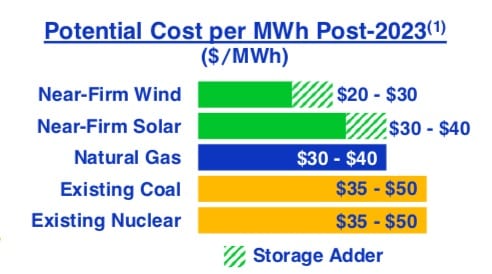... I also don’t understand how biomass is a negative? Generating it took carbon out of the air and burning it puts most of it back? ...
It's not hard to find this info, (did you look?):
If Germany generates 77% of the electricity they used with renewable but are connected to a grid - how does that have any impact on that statistic? It sounds like you’re just being contrarian. ....
That's exactly my point. The 77% number is based on Germany's consumption, not that of the entire grid they are connected to. So it's a very misleading number. The entire grid consumption should be used as the denominator (and the entire grid RE as well).
IOW, if everyone on the grid provided 77% of grid demand that day, or 77% on average, then it would have meaning. We can't use their 77% number as representative as "what can be done" if it only happens on a portion of that grid. It's the average on that grid that tells us something. The key is, they couldn't do this w/o that extended grid. They imported energy on the days they had low RE. These sorts of numbers are of the "have your cake and eat it too" variety.
... If you search for battery $/kWh over time or solar $/kw over time you get some graphs showing they are dropping fast! I’m not looking at future projections but actual recent history:
Batteries dropped in half 2015-2019 ... Solar dropped in half 2009-2015 ... .
But we are talking about the future, so it is relevant. Perhaps we are hitting diminishing returns on improvements? Regardless, if you want to ignore future trends, then show me storage is feasible at current costs. See why we need future estimates?
... We are making major progress and if we invested more time and money, we would do it faster.
And before someone regurgitates ‘we are putting lots of R&D money’ I’ll ask for what - for some areas like mobile battery packs? And now for car batteries? There are lots of areas, especially industrial that you point out are not commercially viable yet - something tells me as a result there could be more investment in this space. ...
You contradict yourself. First you tell me that batteries and solar will become so much cheaper because look at how well they have improved in the past. Then you tell me we don't invest enough in this tech? How did we improve so much w/o investment?
There is much commonality between mobile, car batteries, and grid storage. A Tesla uses thousands of the same types of cells used in mobile applications, and the basic chemistry is being applied to grid storage. Maybe flow batteries will be used for the grid, but there is plenty of research into all these areas, because there is demand. How did computers and cell phones progress?
... I also don’t expect 100% to 10% generation swings on a grid developed for 100% renewables. If they built it for that, it wouldn’t be concentrated on one source subject to swings. Wind, solar, waves, etc gives diversity and would reduce your swings in generation.
So tell us more about "waves, etc". Germany has wind and solar. They have some access to waves in the North and Baltic seas,not sure how much that could provide. Do you have numbers for potential there? And variability (I'd imagine wind and waves would be somewhat in sync?)? Not sure how much "etc" they plan on.
... Germany has poor solar resources and moderate wind sources. It doesn't exist on itself, and if it would it is pretty much a worst case scenario for any major country. In the winter for example solar insolation is about 1/3 of the summer in that area. That's very different obviously in California.
Well, a lot of people live in Germany, and they want RE. So they will need to deal with their scenario. What are you suggesting, that we pretend they live somewhere with more wind and sun? We need to play the cards we are dealt, and those are Germany's cards. Now, back to the subject, how do they get to 100% RE under their scenario?
Most of the US is not like California, solar drops very significantly here in the mid-west. A few local installations I follow dropped to near zero for a week on several occasions - I thought their reporting went off-line. No, those solar panels were under 6" of snow for a week. Of course, that can be solved with axis tracking to keep them upright in a snow storm (or heaters that use energy!), but that's also more money, and mechanical things like that aren't on a downward cost slope.
Again, that's not realistic in a European grid context. In addition, you are comparing peak & bottom capacity (a few days of 10%/100% in Germany) to lowering average capacity factor by 1/3.
We have to compare peak and bottom. Unless you can get those responsible for 90% of the consumption to sign up to having their power turned off for days at a time. It won't be comforting to be told there is enough electricity on average, but this week, "no soup for you!".
... Never said it was easy. I am saying it will be feasible at current cost trends if you are smart about it without breaking the bank. Putting only wind and solar everywhere and not linking up isn't smart, and it is not actually what is happening ...
Well, I sure haven't seen much going on outside of solar and wind. Transmission lines are fought by some of the same people who want 100% RE. I'll try to get back to your earlier links after dinner, in case the answers are there.
-ERD50



